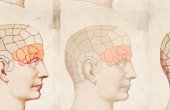It Turns Out We Were Born to Groove

In 2009, my research group in Amsterdam, in collaboration with colleagues at the HUN-REN Research Center in Hungary, found that newborns possess the ability to discern a regular pulse — the beat — in music. It’s a skill that might seem trivial to most of us but that’s fundamental to the creation and appreciation of music. The discovery sparked a profound curiosity in me, leading to an exploration of the biological underpinnings of our innate capacity for music, commonly referred to as “musicality.”
In a nutshell, the experiment involved playing drum rhythms, occasionally omitting a beat, and observing the newborns’ responses. Astonishingly, these tiny participants displayed an anticipation of the missing beat, as their brains exhibited a distinct spike, signaling a violation of their expectations when a note was omitted. This discovery not only unveiled the musical prowess of newborns but also helped lay the foundation for a burgeoning field dedicated to studying the origins of musicality.
Music is not solely a cultural phenomenon but also possesses deep biological roots, apparently offering an evolutionary advantage to our species.
Yet, as with any discovery, skepticism emerged (as it should). Some colleagues challenged our interpretation of the results, suggesting alternate explanations rooted in the acoustic nature of the stimuli we employed. Others argued that the observed reactions were a result of statistical learning, questioning the validity of beat perception being a separate mechanism essential to our musical capacity. Infants actively engage in statistical learning as they acquire a new language, enabling them to grasp elements such as word order and common accent structures in their native language. Why would music perception be any different?
To address these challenges, in 2015, our group decided to revisit and overhaul our earlier beat perception study, expanding its scope, method and scale, and, once more, decided to include, next to newborns, adults (musicians and non-musicians) and macaque monkeys.
The results, published last month in Cognition, unequivocally confirm that beat perception is a distinct mechanism, separate from statistical learning. The study provides converging evidence on newborns’ beat perception capabilities. In other words, the study was not simply a replication but utilized an alternative paradigm leading to the same conclusion, and, as such, it succeeded in dispelling any lingering doubts.
When we employed the same paradigm with macaque monkeys in 2018, we found no evidence for beat processing, only a sensitivity to the isochrony (i.e., regularity) of the rhythms. This suggests that the evolution of beat perception unfolded gradually among primates, reaching its pinnacle in humans and manifesting with limitations in other species like chimpanzees and various other nonhuman primates. It provides further empirical support for the Gradual Audiomotor Evolution (GAE) hypothesis I outlined in my 2019 book “The Evolving Animal Orchestra,” a hypothesis that addresses the similarities and differences that are found in rhythm perception (and production) between human and nonhuman primates. It suggests the connection between the motor and auditory brain areas to be stronger wired in humans as opposed to chimpanzees or gibbons, while mostly lacking in macaques.
What does this study say about the origins of music, and why does it matter? When we integrate the findings of the new study with our previous work, we now have converging evidence from two distinct paradigms indicating the functionality of beat processing in newborn infants. This adds weight to the argument for a biological foundation of beat perception itself. The study not only contributes to our understanding of the biological underpinnings of musicality but also underscores the intricate and multifaceted nature of our capacity to perceive and engage with rhythmic elements in the auditory environment. As such, music is not solely a cultural phenomenon but also possesses deep biological roots, apparently offering an evolutionary advantage to our species.
The exciting prospect of placing the study of the evolutionary origins of musicality at the forefront of international research is currently witnessing a surge in interest. Previously relegated to mere speculation, this field explores the biological processes that were set in motion millions of years ago, potentially shaping human nature over the last millennia. Despite the challenges posed by the fact that music doesn’t fossilize, and our musical brain doesn’t leave physical traces, a paradigm shift has taken place in recent decades, steering the field toward empirical inquiry.
Alongside psychology and neuroscience, the realms of biology and genomics now offer effective toolkits for empirically testing theories on the origins of music in the present day. Consequently, musicality research is gaining scientific respectability, coherence, and maturity. The once-speculative nature of the origins of musicality research is giving way to a more concrete and scientifically rigorous approach, making it an exciting and promising avenue for those delving into the mysteries of our musical evolution.
Henkjan Honing is a professor of Music Cognition at the University of Amsterdam, author of “The Evolving Animal Orchestra: In Search of What Makes us Musical,” and editor of “The Origins of Musicality.”



